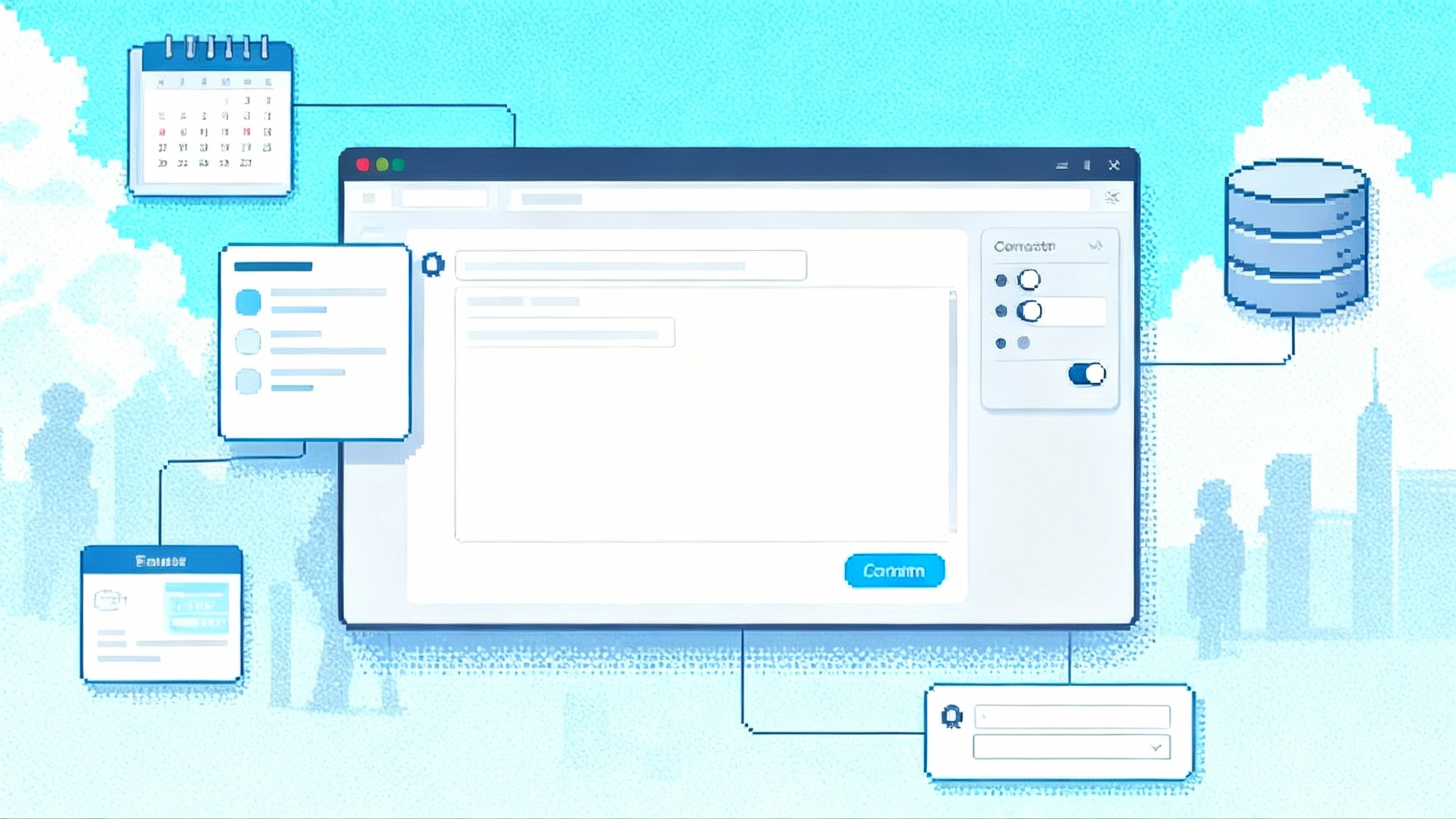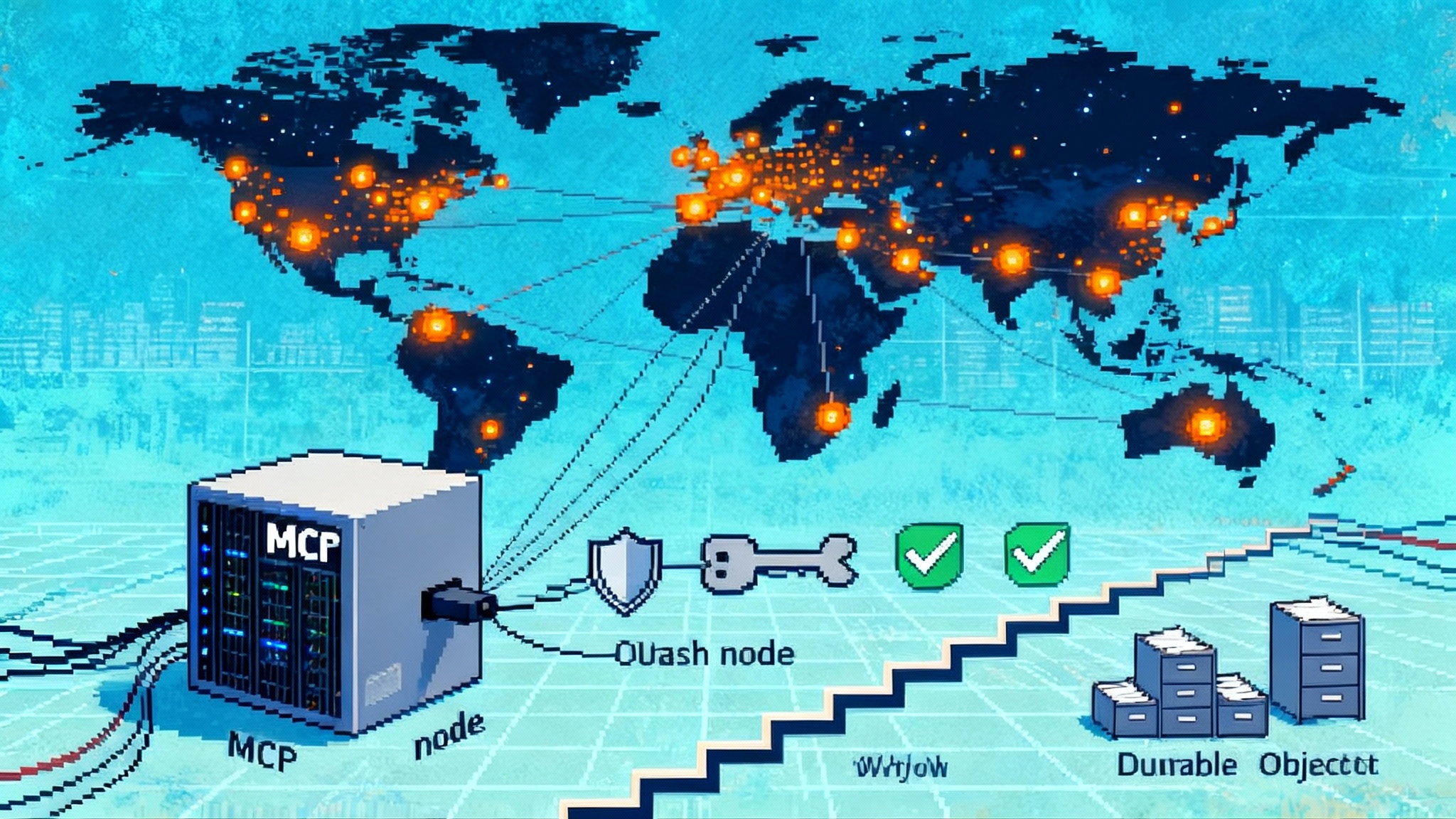Inside Gemini Enterprise: Google’s big bet on AI agents
Google's Gemini Enterprise unifies agent discovery, no-code creation, prebuilt experts, and governance on one platform. Learn what changed, why it matters, and how CIOs can deploy agents without chaos.

Breaking: Google’s new front door to enterprise AI
Google has introduced Gemini Enterprise, a unified platform for building and deploying AI agents across the business. This is not a branding tweak. It is a consolidated toolkit that brings agent creation, discovery, and governance into one place, with pricing and controls designed for broad rollout. Early coverage noted that it is positioned as a Google Cloud platform rather than a simple Workspace add on, which is a meaningful shift in scope and ambition. See the early coverage of Gemini Enterprise for context.
If you have been tracking Google’s enterprise AI arc, this launch is the clearest signal yet of the company’s intent: make agents the default way employees search, decide, and act. Think of Gemini Enterprise as a modern intranet that does not just serve pages. It thinks, plans, and executes within your security boundaries, while giving administrators a single control plane to enforce policy.
What is genuinely new
1) Agentspace folds into one platform
Over the past year, Agentspace emerged as Google’s home for enterprise search and agentic workflows. Teams could search across tools, chat with an assistant, and publish simple agents. With Gemini Enterprise, those capabilities move under one banner and one admin surface. The Agent Gallery where employees discover approved agents, the Agent Designer for no code creation, and the connectors to systems like Salesforce and Workday now live in a single environment your administrators can govern end to end.
A helpful visual: in the Agentspace era you had powerful rooms in a building. Gemini Enterprise turns those rooms into a connected floor plan with one front desk, one keycard, and one fire code.
2) Prebuilt expert agents out of the box
Google is shipping expert agents for common knowledge work: Deep Research to synthesize long form findings from internal and external sources, Idea Generation to run structured brainstorming, and NotebookLM for Enterprise to reason over proprietary documents and data. These are not toy demos. They are production ready templates that cut time to value by packaging the brittle parts: prompt patterns, tool choice, context assembly, evaluation hooks, and safe actions.
A practical example: a product marketing team can spin up a research agent that pulls from competitive intelligence in Drive, summarizes analyst notes, and outputs a one page battlecard. No tickets to engineering. No new scripting language. The agent inherits permissions and keeps a complete audit trail.
3) A stronger security posture by design
Security is not a slide anymore. Gemini Enterprise brings controls that matter to risk teams: identity integration with corporate accounts, permissions aware search, detailed audit logs, tuned content filters, and customer managed keys combined with virtual private cloud boundaries. Google has emphasized that its productivity agents and the underlying foundation have cleared high bars for government grade authorization. For a chief information security officer, the headline is simple. You can deploy agents without carving exceptions out of policy.
4) Bring your own model without lock in
Gemini Enterprise is not a one model platform. It sits on Google Cloud’s model garden and agent tooling, which means you can mix Google’s reasoning models with third party and open source models where that makes sense. Google has expanded options, including the ability to self deploy proprietary models in your VPC. The practical result: a sales enablement agent can use a cost efficient model for retrieval and summarization, then hand off a sensitive pricing recommendation to a higher assurance model that runs inside your network perimeter. Interoperability features, including agent to agent protocols and support for emerging connection standards, make this multi agent world less brittle.
Why this could unlock 2026 scale adoption
Enterprise AI adoption stalls for three reasons: value shows up too slowly, risks are unpredictable, and the experience is fragmented. Gemini Enterprise aims at all three.
- Time to value: Prebuilt agents and a no code Agent Designer remove the need for every department to form a developer squad. You can ship a useful agent in a week, then iterate in production.
- Risk predictability: Controls such as regional data residency, role based access, and action whitelists give security teams levers they already understand. That translates to faster approvals.
- Unified experience: A single Agent Gallery and a common chat surface standardize how employees find and use agents. The experience moves from side project to everyday tool.
There is also a distribution advantage. Many organizations already run Google Workspace and Google Cloud, which reduces the integration tax. Your agents show up where users work. Admins govern them with the same identities and policies. Finance can treat it like another seat based platform rather than a patchwork of bespoke projects.
If you are comparing platforms, it is useful to place Gemini Enterprise in the broader trend we have covered on this site. The move toward centralized agent platforms echoes the rise of agent hubs as control plane. It also parallels how Amazon is turning agents into deployable building blocks, as we explored in our AWS Agents Marketplace comparison. On the user side, the shift to agents that can operate directly in the browser aligns with the pattern in browser native agents arrive.
A pragmatic rollout playbook
You do not need a moonshot. You need the first three agents that win trust and free up time. Here is a concrete plan you can run without a large consulting engagement.
Pick starter use cases with measurable outcomes
- Sales RFP triage: Ingest the request for proposal, highlight deal breakers, assemble a compliance matrix from approved answers, and draft the first response. Target: reduce first draft time by 60 percent and improve win rate on qualified bids.
- Support deflection and resolution: Build an agent that searches across knowledge base, tickets, and bug tracker, then proposes steps with citations to agents in your contact center. Target: cut average handle time by 20 percent without dropping customer satisfaction.
- Finance variance insights: Create a monthly close agent that explains budget versus actuals by pulling ledger entries, purchase orders, and forecasting notes. Target: shrink time to insight from days to hours.
- HR onboarding concierge: Connect to your identity system, learning platform, and calendar to guide new hires through week one tasks and policies. Target: reduce HR tickets per new hire by half.
- Engineering change summaries: Have an agent review merged pull requests, release notes, and incident reports to generate a weekly digest that non engineers can read. Target: better cross functional alignment with minimal engineering time.
Start with one function and two departments. Limit scope to data you already own and systems where you have admin rights. Resist the urge to federate every system on day one.
Build guardrails first, then prompts
- Establish an action whitelist: Specify exactly which tools an agent may call, such as calendar read, ticket creation, or quote draft. Keep write actions off until you have daily use at read only.
- Define input and output policies: Write concrete rules for what can be used as context and what must appear in answers. For example, no external web content for regulated workflows, and all outputs must include source citations from allowed systems.
- Implement human in the loop checkpoints: Require approvals for actions that change state. Route anything that looks like high risk access or spend to a person by default.
- Turn on logging and reviews: Mandate weekly review of ten random conversations per agent. Measure precision and recall for retrieval, hallucination rate, and action error rate.
- Enforce identity and least privilege: Map agents to service accounts with narrow scopes. Treat an agent like a teammate that only needs the minimum to do its job.
Change management that actually sticks
- Create an agent owner role: Every agent must have a product owner in the business and a technical owner in IT. Make them jointly responsible for usage, quality, and compliance.
- Launch in shadow mode: For the first two weeks, the agent recommends actions rather than executing them. Capture deltas between recommendation and human decision to refine instructions.
- Publish a gallery with clear labels: Tag agents as pilot, internal, or production. Remove agents that fall below usage or quality thresholds.
- Train by doing: Run 45 minute hands on sessions per department with a checklist of five real tasks. No slide decks. Record wins and blockers.
- Incentivize adoption: Publish team level dashboards of time saved and error rates. Reward teams that contribute high quality prompts, data connectors, or improvements.
A 90 day template
- Days 1 to 14: Stand up the environment, wire identity, enable logging, and select three starter use cases.
- Days 15 to 45: Build and test agents in shadow mode, tune retrieval and instructions, and run live training.
- Days 46 to 75: Flip to execution for low risk actions, expand to two more teams, and add one partner or third party model if needed.
- Days 76 to 90: Formalize support and ownership, publish your internal gallery, and present outcomes to the executive team with a roadmap to five more agents.
How this changes the calculus for CIOs on Workspace and Cloud
If your organization already standardizes on Google Workspace and runs workloads on Google Cloud, Gemini Enterprise simplifies decisions that used to sprawl across tools and contracts.
- One control plane: Identity, access, and audit trail travel with your agents. You avoid a parallel security stack just for AI projects.
- Data gravity: Agents retrieve from Drive, BigQuery, and connected systems without duct tape. The closer the agent is to your data, the more predictable cost and latency become.
- Procurement simplicity: Purchasing looks like other seat based platforms, not bespoke professional services. That unlocks faster approvals through existing buying channels.
- Model choice without chaos: Start with Gemini for reasoning heavy tasks and selectively bring in third party models for niche domains. Keep a short list, measure quality and cost, and swap when the data says to.
- On premises and sovereign options: For workloads that cannot leave a facility, the ability to place models inside your perimeter through distributed cloud options changes the viability of agent projects in public sector, financial services, and healthcare.
The meta advantage is organizational. You can give each department its first agents with confidence that they comply with the same policies as email, storage, and collaboration. The platform becomes fabric that connects workflows rather than an island of experiments.
Red flags and what to watch
- Naming history: There has been prior confusion between a Workspace add on labeled Gemini Enterprise and the new Cloud platform. Treat the new platform as an agent toolkit on Google Cloud with its own governance and lifecycle.
- No code does not mean no engineering: The first versions of an agent are about data access and retrieval quality. That still requires thoughtful schema mapping, connector setup, and evaluation.
- Evaluation discipline: Agents that plan and act feel magical until they silently skip a step. Set quantitative bars for retrieval accuracy, action success, and user satisfaction. Use holdout sets and replay to test changes.
- Connector coverage: Map your top ten systems and verify read and write paths exist. Prioritize the systems your people touch every day, such as your knowledge base, ticketing, and sales tools.
- Cost control: Track cost per task and cost per minute of usage. Small inefficiencies at the prompt or retrieval layer compound at scale.
A short buying checklist
- Does the platform give you permissions aware search across core systems on day one, not as a future integration?
- Can you deploy read only agents first and progressively enable actions with approval steps?
- Are audit logs, content filters, and data residency settings first class, not premium add ons?
- Can you mix models and swap them without rewriting your agents?
- Is there a clear path to run agents closer to your data for regulated workloads?
- Do you have an owner in the business and an owner in IT for every agent you ship?
The bottom line
Gemini Enterprise is Google’s strongest argument that agents are ready for production. It unifies the place where employees discover agents, the tools to build them without code, and the controls security teams require. The combination of prebuilt agents, a stronger security posture, and flexible bring your own model options reduces the friction that has slowed adoption. If you already run Workspace and Cloud, this platform is a pragmatic way to make agents routine rather than exceptional.
Start small, measure obsessively, and grow your gallery one proven workflow at a time. By the time budgets and plans roll into 2026, you will not be asking whether to adopt agents. You will be deciding which ones deserve a permanent spot on your team.








